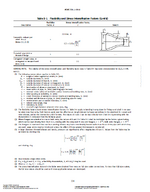TomoB
Mechanical
- Dec 15, 2021
- 19
Hello,
I am performing a pipe stress analysis for a system and have encountered some confusion regarding the wall thickness of reducers.
After reviewing the ASME B16.9 standard, I found that no specific wall thickness is defined for reducers. I also searched through the forum and learned that, unlike EN standards, there are no standardized wall thickness values for these components.
From my understanding, design of a reducer is determined by the specified wall thickness of the connected pipe, i.e., the wall thickness at the ends of the reducer. However, the wall thickness and design of the reducer body itself are left to the manufacturer's choice, provided they comply with the ASME B31.1 code.
My question is: How can I determine the appropriate values to use for the reducer in my calculations?
Thank you for your time!
I am performing a pipe stress analysis for a system and have encountered some confusion regarding the wall thickness of reducers.
After reviewing the ASME B16.9 standard, I found that no specific wall thickness is defined for reducers. I also searched through the forum and learned that, unlike EN standards, there are no standardized wall thickness values for these components.
From my understanding, design of a reducer is determined by the specified wall thickness of the connected pipe, i.e., the wall thickness at the ends of the reducer. However, the wall thickness and design of the reducer body itself are left to the manufacturer's choice, provided they comply with the ASME B31.1 code.
My question is: How can I determine the appropriate values to use for the reducer in my calculations?
Thank you for your time!

